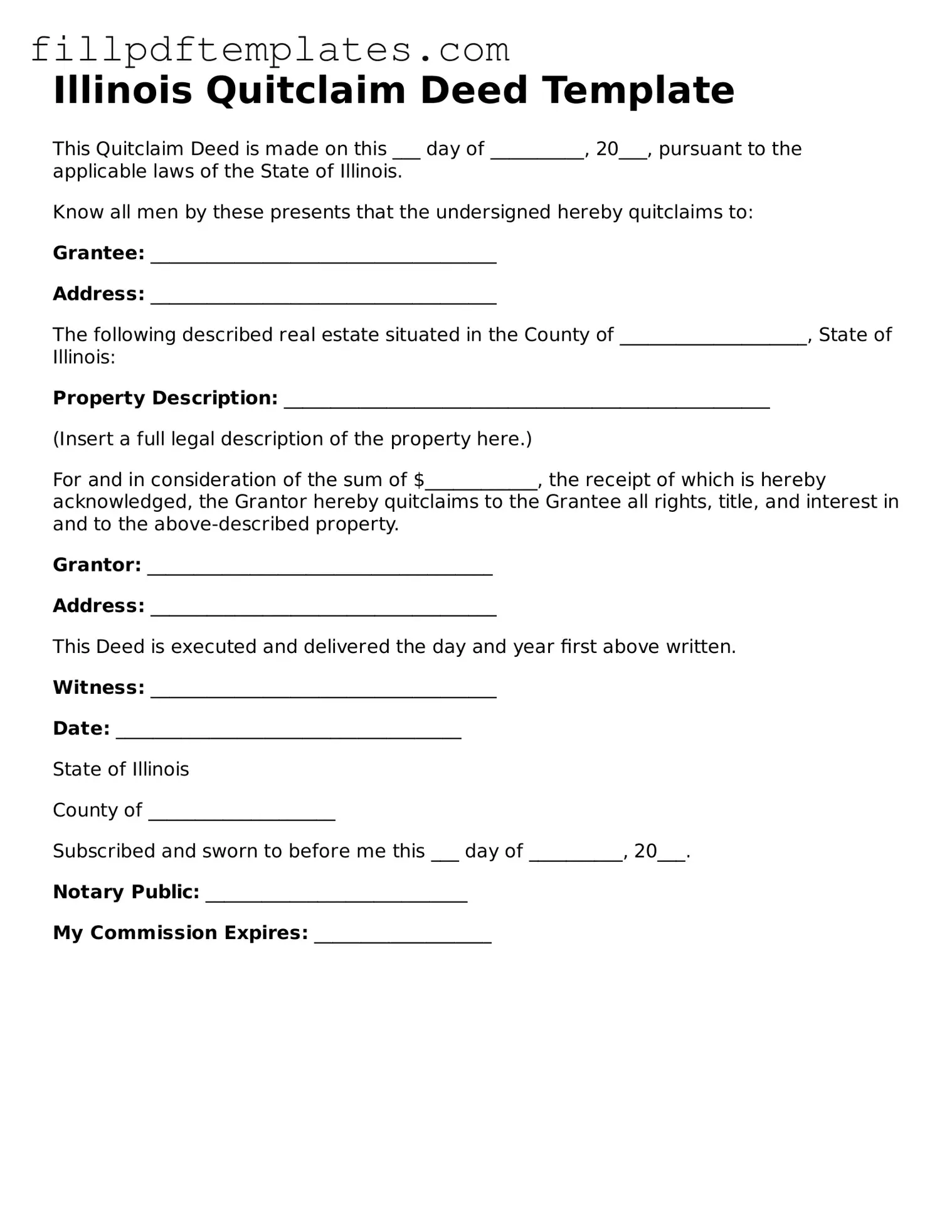Illinois Quitclaim Deed Template
This Quitclaim Deed is made on this ___ day of __________, 20___, pursuant to the applicable laws of the State of Illinois.
Know all men by these presents that the undersigned hereby quitclaims to:
Grantee: _____________________________________
Address: _____________________________________
The following described real estate situated in the County of ____________________, State of Illinois:
Property Description: ____________________________________________________
(Insert a full legal description of the property here.)
For and in consideration of the sum of $____________, the receipt of which is hereby acknowledged, the Grantor hereby quitclaims to the Grantee all rights, title, and interest in and to the above-described property.
Grantor: _____________________________________
Address: _____________________________________
This Deed is executed and delivered the day and year first above written.
Witness: _____________________________________
Date: _____________________________________
State of Illinois
County of ____________________
Subscribed and sworn to before me this ___ day of __________, 20___.
Notary Public: ____________________________
My Commission Expires: ___________________
